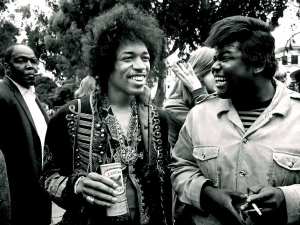
As we start to gather in tribes across the real-time web, dimensions of the value that is created begin to surface. How can the tribe help the individual where The Google can’t? I’m starting to read Richard Thaler and Cass Sunstein’s Nudge, a book about behavioral economics. In the introduction of the book, they discuss the idea of Choice Architecture. And it was immediately apparent that this concept needs to be included in Vendor Relationship Management. There are many aspects to choice architecture, but I’d like to focus on a common false assumption:
…that almost all people, almost all of the the time, make choices that are in their best interest or at the very least are better than the choices that would be made by someone else.
Imagine yourself buying a digital camera, selecting a health plan or planning a diet. How much experience do you have in each of these areas? Do you have what it takes to make the optimal decision?
In many areas, ordinary consumers are novices, interacting in a world inhabited by experienced professionals trying to sell them things. More generally, how well people choose is an empirical question, one whose answer is likey to vary across domains. It seems reasonable to say that people make good choices in contexts in which they have experience, good information and prompt feedback–say, choices among ice cream flavors.
How can I augment my experience in any specific transaction context? My XMPP Tribe can help me right now, in real time, through my iPhone. So why is asking the tribe better than reading user reviews? Because the more you read online reviews, the less you know. If there are a large volume of reviews, you can be certain that almost every possible viewpoint will be represented. My real-time tribe can even help me properly filter anonymous reviewers.
The normal sales transaction context involves a high degree of information asymmetry. VRM attempts to turn the signaling context around. Rather than the vendor signaling the customer, the customer signals the vendor– but this does nothing with regard to the uneven distribution of experience within the transaction. VRM can’t just be about signaling and paying for what you like. It’s also about creating a consideration set and making a choice that leads to a transaction. And if domain experience is lacking, the real-time tribe makes up the difference and augments the customer’s knowledge– an instant injection of experience.
Have you ever been experienced? Well I have…
If you can just get your mind together
Uh-then come on across to me
We’ll hold hands and then we’ll watch the sunrise
From the bottom of the sea
But first, are you experienced?
Uh-have you ever been experienced-uh?
Well, I have
(well) I know, I know, youll probably scream and cry
That your little world won’t let you go
But who in your measly little world, (-uh)
Are you tryin’ to prove to that you’re
Made out of gold and-uh, can’t be sold
So-uh, are you experienced?
Have you ever been experienced? (-uh)
Well, I have
Uh, let me prove it to you, yeah
Trumpets and violins I can-uh, hear in the distance
I think they’re callin our name
Maybe now you can’t hear them,
But you will, ha-ha, if you just
Take hold of my hand
Ohhh, but are you experienced?
Have you ever been experienced?
Not necessarily stoned, but beautiful
